Farming
Bird flu restrictions end
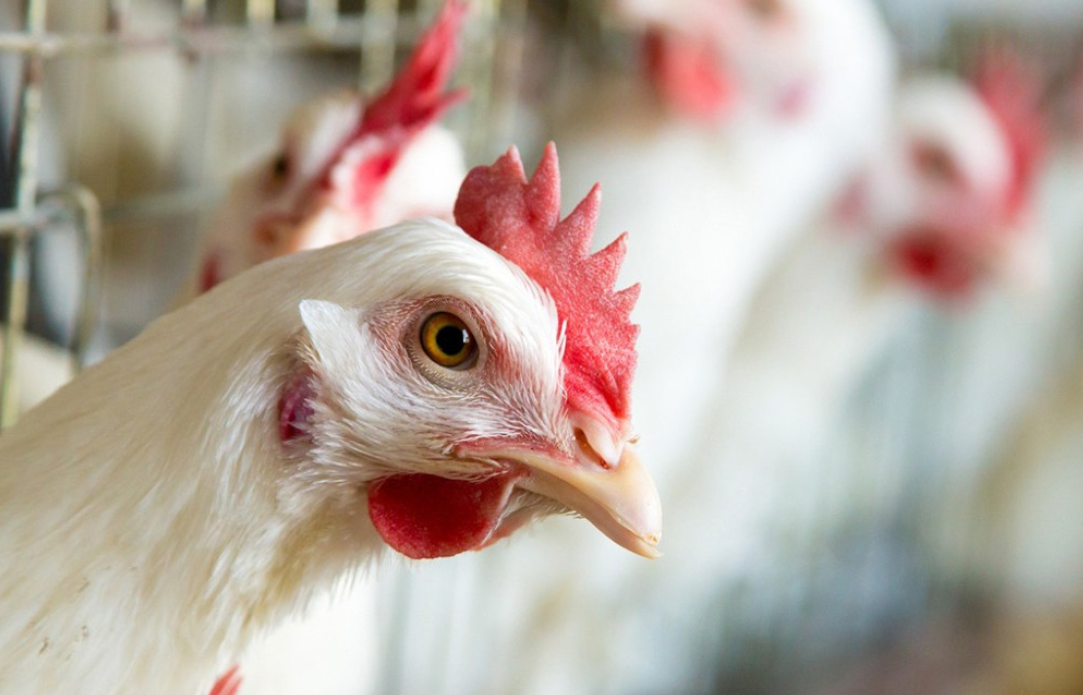

Restrictions end: Keepers urged to maintain vigilance
THE CABINET Secretary for Environment and Rural Affairs, Lesley Griffiths has announced the Avian Influenza Prevention Zone, which expired on April 30, will not be replaced.
The Cabinet Secretary has taken this decision based on an updated veterinary risk assessment conducted by the Animal and Plant Health Agency (APHA). However, the temporary suspension on gatherings of some species of birds will remain as additional evidence is considered.
The Cabinet Secretary said: “Last December I declared the whole of Wales an Avian Influenza Prevention Zone in response to Highly Pathogenic Avian Influenza H5N8 outbreaks being reported across Europe, North Africa and the Middle East. This was a precautionary measure to minimise the risk of poultry and other captive birds being infected by wild birds.
“We have been closely monitoring this situation and APHA has been preparing updated outbreak risk assessments.
The most recent evidence-based veterinary risk assessment concluded there remains a Low – Medium risk of resident wild waterfowl being infected with H5N8. Meanwhile, the exposure assessment risk for poultry farms is Low, but heightened, and will depend on the biosecurity measures on each farm. This level is consistent with November 2016, when disease was present across Europe in sporadic outbreaks and occasional wild bird findings were being reported.
“Therefore, I am pleased to announce, following the expiry of the current Avian Influenza Prevention Zone on 30 April, this will not be replaced. Whilst I am sure this is welcome news it is important to remember avian influenza remains a constant and real threat to our poultry and other captive birds.”
The Chief Veterinary Officer for Wales, Christianne Glossop, added: “I would like to stress the need for all keepers of poultry and other domestic captive birds to remain alert for signs of the disease and to contact their private veterinarians if they have any concerns. If anyone suspects disease they should contact the Animal and Plant Health Agency immediately.
“It is essential all keepers maintain effective biosecurity practices, such as considering and updating self-assessment forms, cleansing and disinfecting all clothing, equipment and vehicles (using approved disinfectants) and implementing effective pest control measures to minimise the opportunities of contact between their birds and wild birds and wild life.
“We can all play a part in supporting the ongoing surveillance by reporting any findings of dead wild birds to the GB helpline on 03459 335577. In particular, any wild ducks, wild geese, swans, gulls or birds of prey and where more than five birds of any species are found dead in the same location. We must also ensure we all comply and respect the biosecurity measures put in place by poultry or other captive bird keepers.
“I would also like to take this opportunity to remind all poultry keepers with 50 birds or more they must register their flocks on the Poultry Register and strongly encourage all poultry keepers, including those with fewer than 50 birds, to register. This will ensure they can be contacted immediately, via email or text update, in an avian disease outbreak enabling them to protect their flock at the earliest opportunity.
“If poultry or other captive birds are being let outside after a prolonged period of being housed I would recommend keepers consult their private veterinarian on the health impacts.”
Meanwhile the UK Government’s last remaining bird flu control measures in England – including the ban on poultry gatherings – will be lifted on Monday, May 15, Defra’s Chief Vet announced on Friday (April 28).
With the lifting of the Avian Influenza Prevention Zone (AIPZ), bird keepers will no longer be required by law to follow specific disease prevention measures, intended to reduce the risk of highlight pathogenic H5N8 bird flu passing from wild birds to domestic flocks. However, Defra officials said keepers should continue to follow industry standard best practice on biosecurity, including minimising movement in and out of bird enclosures, cleaning footwear, keeping areas where birds live clean and tidy and feeding birds indoors.
A ban on gatherings featuring at-risk bird species, including waterfowl and poultry has been in place since December, when migrating wild birds brought a spate of H5N8 cases to Western Europe. The outbreaks had a devastating effect on the poultry industry in South West France, where birds in three departments had to be culled to prevent further spread of the disease after it was transferred from farm-to-farm. The ban will be lifted in England on May 15, meaning bird gatherings can then resume, subject to some additional identity and health checks and biosecurity measures.
According to the latest risk assessment from Defra’s advisors, the overall risk of another H5N8 outbreak in the UK has fallen from ’medium’ to ‘low’, comparable with risk levels in November 2016, and should continue to fall in warmer, drier spring weather conditions.
Farming
Basic Payment Scheme 2025 balance paid to 95% of Welsh farmers
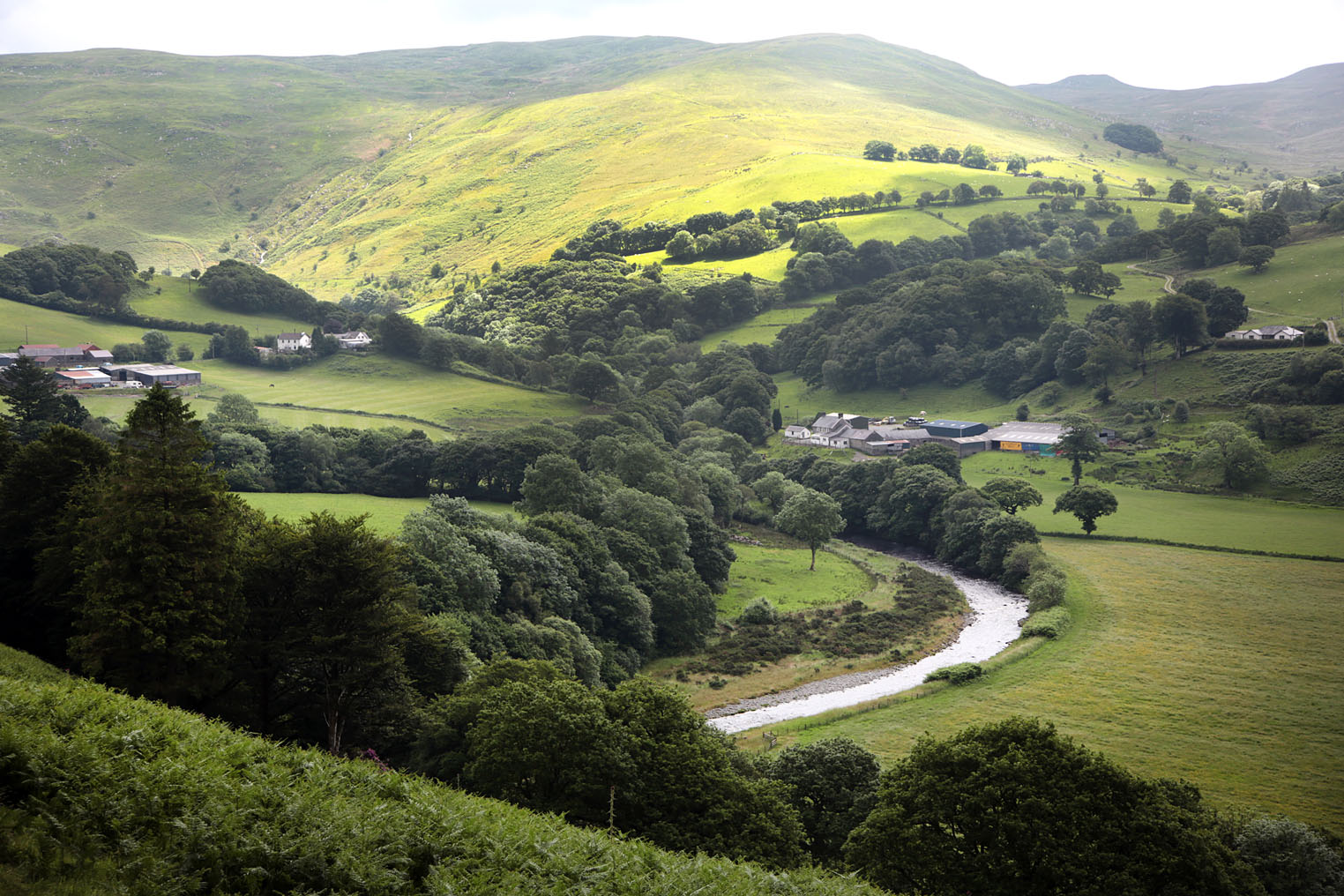
Final year of BPS as transition to Sustainable Farming Scheme begins
The WELSH Government says more than ninety-five per cent of farm businesses have now received their full or balance payment under the final year of the Basic Payment Scheme (BPS), ahead of the introduction of the new Sustainable Farming Scheme (SFS) in 2026.
Announcing the update on Friday (Dec 12), Deputy First Minister and Cabinet Secretary for Climate Change and Rural Affairs, Huw Irranca-Davies, confirmed that over 15,400 Welsh farm businesses have been paid £68.7m. This comes on top of the £160m issued in BPS advance payments since 14 October.
Final round of BPS payments
The Basic Payment Scheme, which has been the backbone of farm support in Wales for a decade, provides direct income support to help farmers plan and manage their businesses. BPS 2025 marks the last year in which full BPS payments will be made before the scheme begins to be phased out.
The Cabinet Secretary said officials would “continue to process the outstanding BPS 2025 claims as soon as possible,” adding that all but the most complex cases should be completed by 30 June 2026.
Payments issued today represent the main balance due to farmers following earlier advances, giving many businesses the cash flow they need during the quieter winter period—traditionally a challenging time in the agricultural calendar.
Shift to Sustainable Farming Scheme in 2026
From 1 January 2026, the Welsh Government will begin rolling out the Sustainable Farming Scheme, a major reform to how agricultural support is delivered. The SFS will reward farmers for environmental outcomes such as habitat management, carbon reduction and biodiversity improvements, alongside continued food production.
The government has argued that the new scheme is essential to meeting Wales’ climate and nature targets while ensuring long-term resilience in the sector. However, the transition has been closely watched by farming unions, who have raised concerns about the administrative burden, income stability, and the speed at which BPS is being phased out.
Mr Irranca-Davies reaffirmed the government’s stance, saying: “This government is steadfastly committed to supporting Welsh farmers to sustainably produce quality food. This is demonstrated today in our payment of the BPS 2025 balance payments and will continue throughout the transition period.”
Sector reaction
Farming unions are expected to scrutinise the detail of today’s announcement, particularly around remaining unpaid cases. Last year, late payments led to frustration in parts of the sector, with unions calling for greater certainty as the industry faces rising input costs, supply chain pressures and continued market volatility.
The move to the SFS remains one of the most significant agricultural policy changes in Wales since devolution. Ministers insist the shift is designed to support both food production and environmental stewardship, while critics warn the transition must not undermine farm viability—especially for family-run livestock farms that dominate rural areas such as Pembrokeshire, Ceredigion and Carmarthenshire.
What happens next
Farmers still awaiting their BPS 2025 balance will continue to be processed “as soon as possible”, the Welsh Government said. Officials will also publish updated guidance on the Sustainable Farming Scheme ahead of its launch.
The coming year will therefore become a pivotal moment for Welsh agriculture, as the long-standing BPS framework—which provided over £200m annually to Welsh farmers—makes way for a new results-based model that will shape the industry for decades to come.
Community
Wolfscastle farm’s new shed sparked ‘noise nuisance’ claims
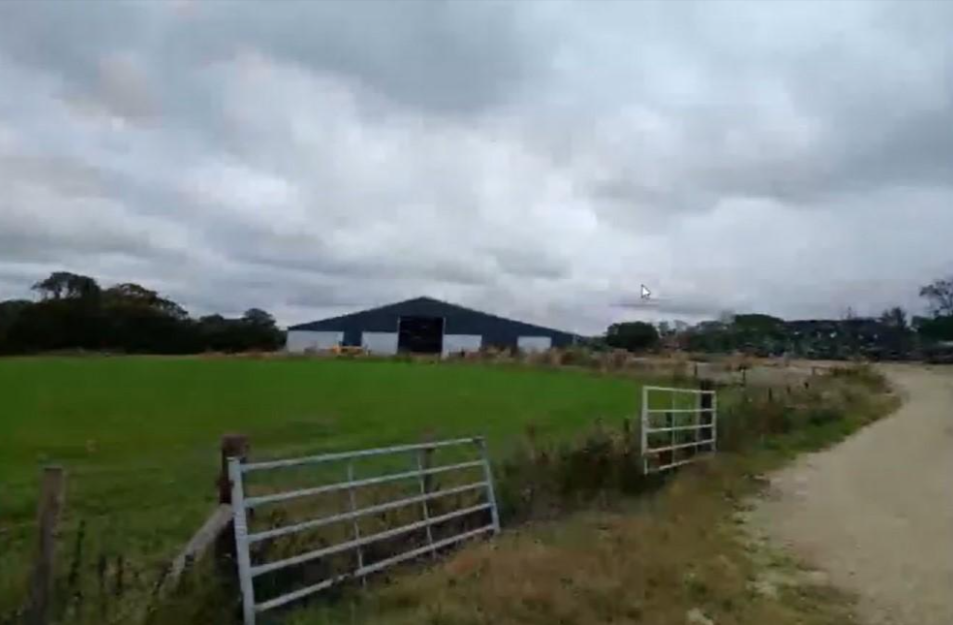
A PEMBROKESHIRE farmer “jumped the gun” in his enthusiasm to build a new cattle shed which includes ‘robot slurry scrapers’ that have been causing a noise nuisance for neighbours, county planners heard.
In a retrospective application recommended for approval at the December meeting of Pembrokeshire County Council’s planning committee, Aled Jenkins sought permission for a replacement cattle housing and silage clamp at Upper Ty Rhos, Wolfscastle.
An officer report said Upper Ty Rhos consists of a herd of 630 youngstock beef cattle, the applicant seeking permission for the replacement 100-metre-long cattle housing building.
It said the building benefits from a robotic scraping system to internally clean it to improve animal welfare and efficiency.
However, the slurry scraper system in operation has been found to constitute a statutory noise nuisance.
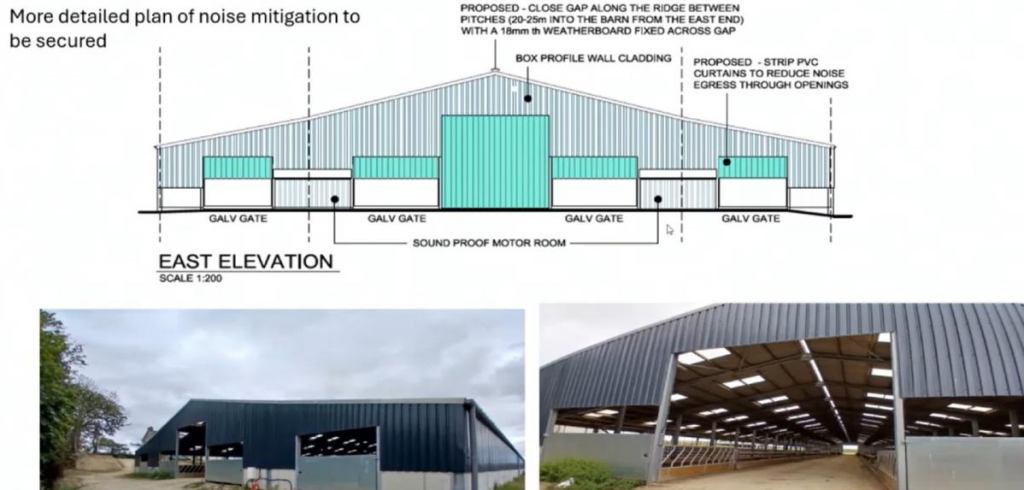
“The introduction of the slurry scraper system has resulted in a new noise source to the locality that is having a significant detrimental impact upon local amenity. The nuisance noise is directly associated with the extended hours of operation of the slurry scraper system and the noise created by the two motors powering the system including the drive mechanism that moves the scraper through the building to remove slurry produced by the housed cattle.
“To further exacerbate the situation, the building has open voids to the eastern gable end, which is within close proximity to the neighbouring property resulting in the building being acoustically weak.
“An acoustic report has been submitted with mitigation methods provided including relocating motors and associated equipment into external enclosures, reduction of noise egress through openings by installing hit-and-miss louvres and/or PVC strip curtains and consideration of blocking the gap between roof pitches along the ridge of the building.”
Three letters of concern were received from members of the public raising concerns including visual and environmental impact, noise issues and a potential for the herd size to increase.
Speaking at the meeting, neighbour Dr Andrew Williams, who stressed he was not seeking to have the shed removed, raised concerns about the noise from the ‘robot scrapers,’ exacerbated by cattle being concentrated in the immediate area from the wider farm complex.
Agent Wyn Harries addressed concerns about the retrospective nature was a result of over-enthusiasm by his client who “jumped the gun”.
He said there was now a scheme that was “fully worked through,” dealing with noise and other issues.
Members backed approval, which includes noise mitigation to address the impact of the robot scrapers; one member, Cllr Tony Wilcox, abstaining on the grounds of the retrospective native of the building “the size of a football field”.
Farming
FUW urges government action as plunging dairy prices threaten family farms
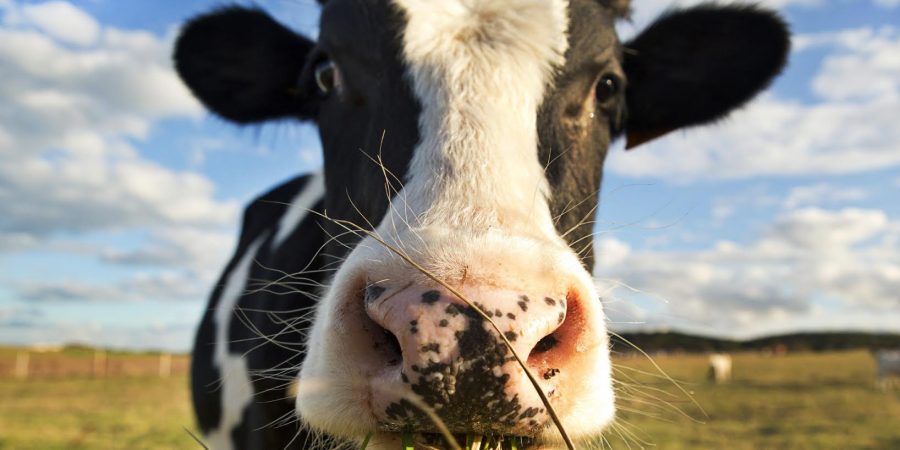
THE FARMER’s UNION OF WALES has sounded the alarm over a sharp and sustained collapse in dairy prices, warning that the situation is placing intolerable pressure on family farms already grappling with regulatory change, rising costs and wider economic uncertainty.
The Union convened an emergency meeting of its Animal Health and Dairy Committee last week to assess the scale of the crisis. Representatives from across Wales reported widespread anxiety, with many members seeing milk prices fall dramatically through the autumn. Processors are now signalling further cuts in early 2026, while commodity markets offer little sign of stability heading into spring.
Farmers, fearful of jeopardising commercial relationships, have approached the FUW confidentially to express grave concern about projected milk payments for the coming months. Many say the offers being made will fall far below the cost of production.
Average milk prices are forecast at just 30–35 pence per litre, against estimated production costs of 39–44 pence per litre (Kite Consulting). On current trajectories, the FUW warns a typical Welsh dairy farm could lose thousands of pounds per month for as long as the downturn persists.
Following its committee meeting, the Union raised the matter directly with Deputy First Minister Huw Irranca-Davies MS during talks in Cardiff on Wednesday, December 3. Officials stressed the immediate threat facing family-run dairy farms and called for urgent consideration of government support to prevent long-term damage to the sector.
Gerwyn Williams, Chair of the FUW Animal Health and Dairy Committee, said the pace of the price crash was “unprecedented”.
“Farmers are facing an impossible situation where input costs remain high while the value of their product plummets. The viability of many family farms is now at serious risk. We need immediate assurances that this crisis is being treated with the urgency it deserves.
“Some can weather a short storm, but rumours that this could continue into summer 2026 will see businesses shut. These modest family farms have already invested heavily to meet regulatory requirements. Cuts on this scale will severely impact their ability to service repayments.”
FUW Deputy President Dai Miles warned that the consequences extend far beyond farm gates.
“Dairy farming underpins thousands of jobs in Wales and is central to the economic, social and environmental fabric of rural communities. When prices fall this sharply, it isn’t just farmers who suffer — local businesses, services and entire communities feel the impact.
“We have made it clear to the Deputy First Minister that government must work with the industry to provide immediate stability and a long-term resilience plan.”
The FUW says it will continue to work with the Welsh Government, processors and supply-chain partners to seek solutions and secure fair, sustainable prices for producers.
-

 Crime6 days ago
Crime6 days agoPhillips found guilty of raping baby in “worst case” judge has ever dealt with
-

 Crime5 days ago
Crime5 days agoKilgetty scaffolder sentenced after driving with cocaine and in system
-

 Crime5 days ago
Crime5 days agoHousing site director sentenced after failing to provide breath sample following crash
-

 Crime5 days ago
Crime5 days agoMotorist banned for three years after driving with cannabis in system
-

 News16 hours ago
News16 hours agoDyfed-Powys Police launch major investigation after triple fatal crash
-

 Education4 days ago
Education4 days agoTeaching assistant struck off after asking pupil for photos of her body
-

 Crime1 day ago
Crime1 day agoMan spared jail after baseball bat incident in Milford Haven
-

 News7 days ago
News7 days agoJury retires tomorrow in harrowing Baby C rape trial

























